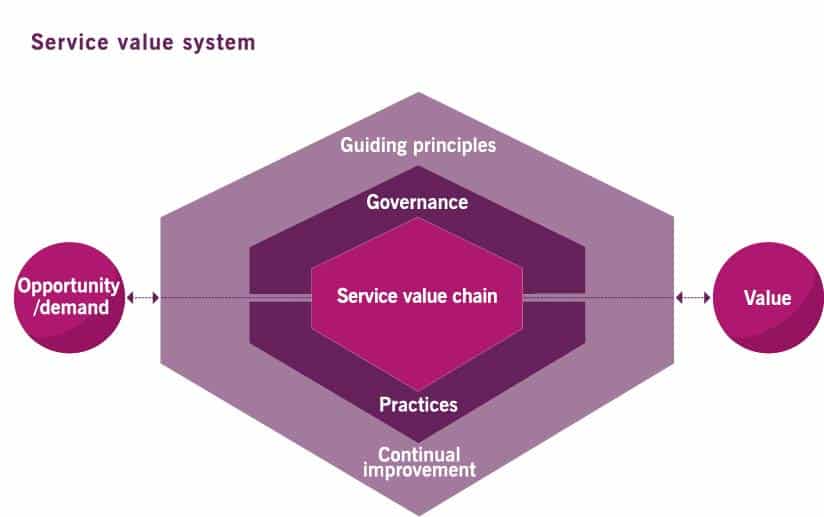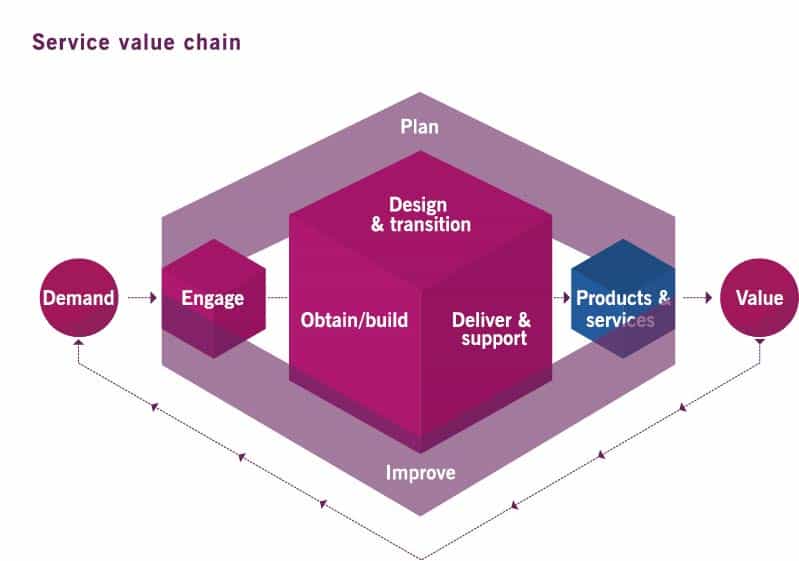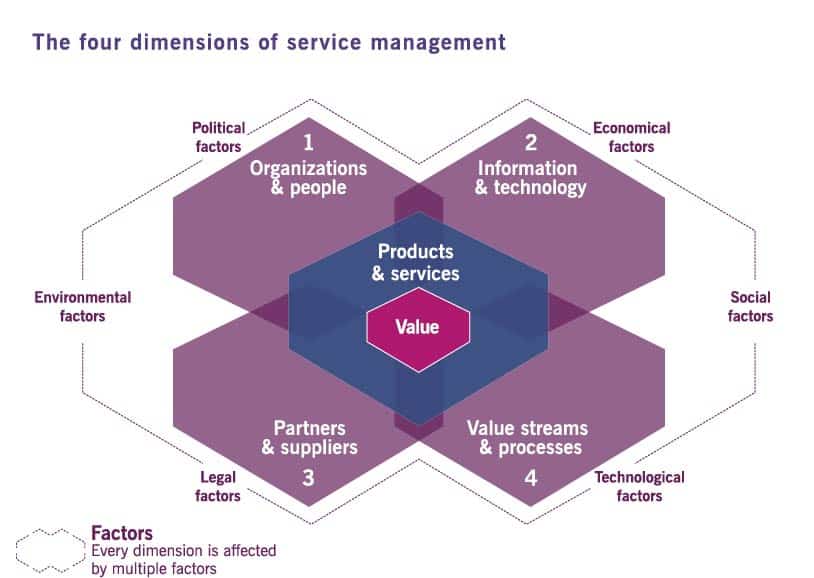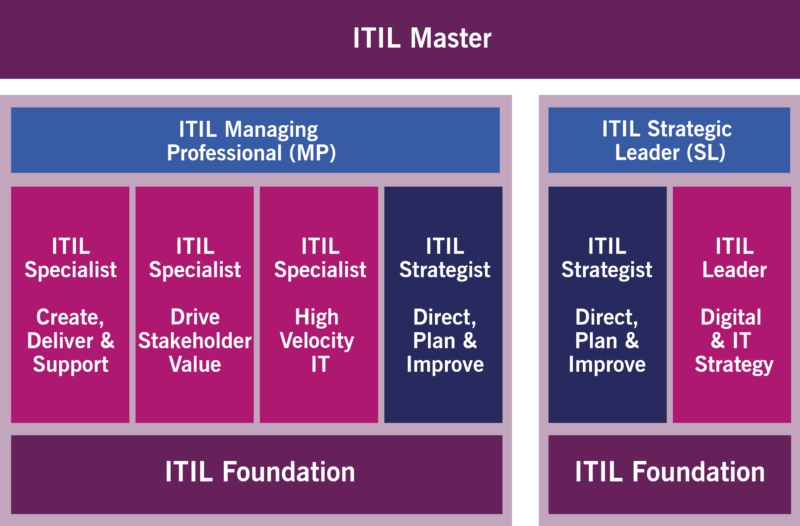ITIL
Best Practice for Service Management
ITIL® 4 Overview
In 2019, AXELOS introduced the current version of its ITSM framework – ITIL 4. ITIL 4 builds on over 30 years of IT Service Management best practice experience by modernizing the practices. This includes concepts of customer experience, value streams, value co-creation, and digital transformation.
While ITIL 3 focused on the Service Management Lifecycle and defined Service as “A means of delivering value to customers…” ITIL 4 focuses on the ITIL Service Value System and the Four Dimensions of Service Management. This focus recognizes the partnership between Service Providers and Customers by updating the definition of Service to “A means of enabling value co-creation by facilitating outcomes that customers want to achieve, without the customer having to manage specific costs and risks.”
Service Value System
The ITIL 4 Service Value System is “a model representing how all the components and activities of an organization work together to facilitate value creation”. The components of the Service Value System are: Guiding Principles, Governance, Service Value Chain, Practices, and Continual Improvement.

Guiding Principles
The ITIL 4 Guiding Principles represent seven practical “recommendations that can guide an organization in all circumstances, regardless of changes in its goals, strategies, type of work, or management structure.” Each of the Guiding Principles should be used in concert and are meant for use in all facets of ITSM. The Guiding Principles are focused on solid and productive decision making and promoting continual improvement throughout IT.
Governance
Governance is “the means by which an organization is directed and controlled”. An organization that adopts governance sets the strategy and goals to meet business needs, ensuring all levels of management and staff are aware of and working towards achieving these goals. When a problem is identified, governance helps address the problem areas and allows for changes in direction as they arise.
Service Value Chain
The Service Value Chain (SVC) is at the center of the ITIL Service Value System (SVS). It is an operating model that outlines six key interconnected activities required to effectively manage products and services. These activities represent the steps that may be taken in the creation of value.

Practices
ITIL V3 described capability areas as “processes” and “functions”. ITIL 4 identifies 34 Practices which it defines as “a set of organizational resources designed for performing work or accomplishing an objective”. It is important to recognize that processes cannot successfully exist on their own, which is discussed further in the Four Dimensions of Service Management.
Continual Improvement
Continual Improvement is bound to every component an organization uses to enable value creation. It is a recurring activity performed at all levels of an organization, ensuring performance continually meets stakeholders’ expectations – even as business needs and desired outcomes change!
Four Dimensions of Service Management
The Four Dimensions of Service Management identify the organizational resources which are leveraged to develop practices and support value streams as well as highlight the external factors which can affect these resources. The Four Dimensions are:
- Organizations and People – An Organization’s structure including roles, responsibilities, etc. which help to develop its culture. People includes an organization’s staff, management, executives, customers, supplier staff and any other potential stakeholder.
- Information and Technology – The information and knowledge used to deliver services, and the technologies required to manage all aspects of the Service Value System.
- Partners and Suppliers – Relationships with other organizations that are involved in the design, development, deployment, delivery, support, and/or continual improvement of service.
- Value Streams and Processes – This dimension defines how the organization works together to enable value creation by identifying the activities, workflows, controls, and procedures needed to achieve the agreed value objectives.

ITIL 4 Training and Certification
ITIL 4 has four Certification Streams: Foundation, Managing Professional, Strategic Leader, and the Extensions modules (Sustainability in Digital & IT and Acquiring & Managing Cloud Services). Training is available for each of these streams, and each course has an examination to confirm understanding of the knowledge obtained.

ITIL 4 Maturity Model
Introduced in late 2021, the ITIL Maturity Model is a tool used by accredited AXELOS Consulting Partners (ACP) to objectively and comprehensively assess a client organization’s service management current-state capabilities and the maturity of the organization’s Service Value System (SVS).
ITIL® is a registered trademark of Axelos Limited, used under permission of Axelos Limited. All rights reserved.
Reuse of any content on this page is strictly forbidden without the consent of ClearBridge Technology Group and Axelos Limited.
We're Here To Help!
Call Us
+1-781-916-2284
